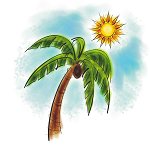Snakes of Cape Coral
The Florida Kingsnake is a beautiful, docile reptile. Typically, adults are 3-4 ft. Unfortunately, these attributes make it highly prized by collectors, and it has become quite rare. I picked up the one shown here in the NW Cape, and it made no fuss when I drove it to my house for a photograph.
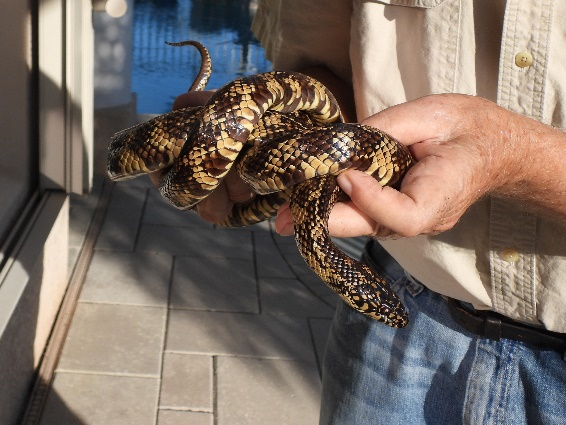 Florida King Snake
Florida King Snake
Snakes get a lot of bad press, going all the way back to the Bible. Also, some are venomous, and many bite when handled, but not all. But you must give them their due. Without legs, they can climb, swim, and are adept hunters. There are dozens of species in our area. I will not attempt to mention them all, concentrating on some of the most common or interesting species.
The Eastern Diamondback Rattlesnake is relatively rare, and to be avoided. It is thick-bodied and large, typically 3-7 ft, with a record length of 8 ft. This one was about 3.5 feet (I did not attempt to measure it!), from the south side of Crystal Lake. If you see one, just leave it alone and let it go its way. Most snakebites result from people getting involved with the snake in some manner.
 Eastern Diamondback Snake
Eastern Diamondback Snake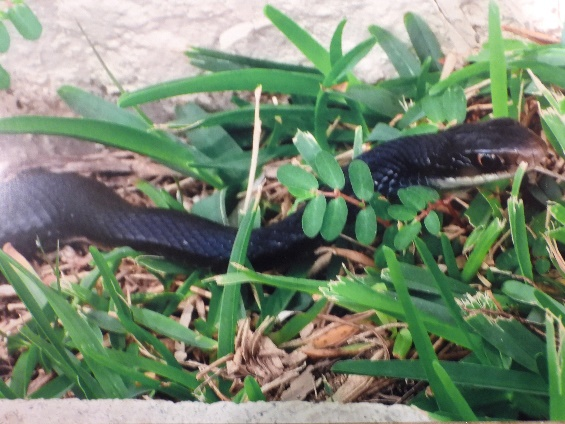 Southern Black Racer
Southern Black Racer
The Southern Black Racer is probably the most familiar snake in the area, often found in yards. Its shiny black color and thin body make for easy identification, as does its speed (for a snake), for which it is named. Up to 5 ft, but usually 3-4.
The Yellow Rat Snake is another docile snake that is easily handled, as is the case with most rat snakes. If you are inclined to keep a local snake as a pet, this species is a good choice. Usually 3-5 feet long; record 7.25 feet. Often found around structures. They commonly feed on lizards, frogs, rodents, and birds and their eggs.
 Yellow Rat Snake
Yellow Rat Snake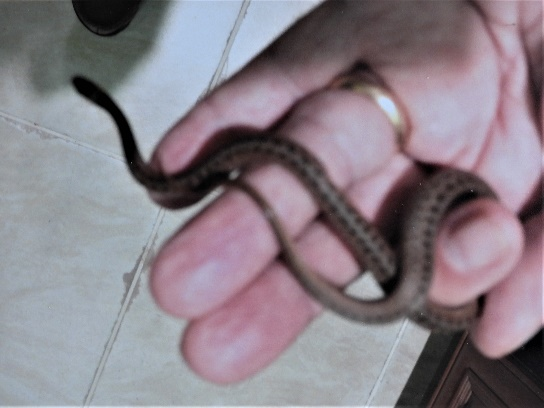 Florida Brown Snake
Florida Brown Snake
The Florida Brown Snake in this (fuzzy) picture is an adult found swimming in my pool. The maximum size if about 19 inches, thus being one of our smaller snakes. They are common and found in several forms (subspecies) throughout the middle and eastern United States.
The Eastern Garter Snake is widespread in the eastern portions of the US and southern Canada. For those from the north, this is likely to be the snake you saw most often. Like many water snakes, they do not tolerate handling and will struggle, bite, defecate, release a smelly musk, and do whatever else they can to convince you to release them. They are moderately sized, up to 4 feet, but usually 2-3. The one in the photo is also from my pool, which seems to be something of a snake trap.
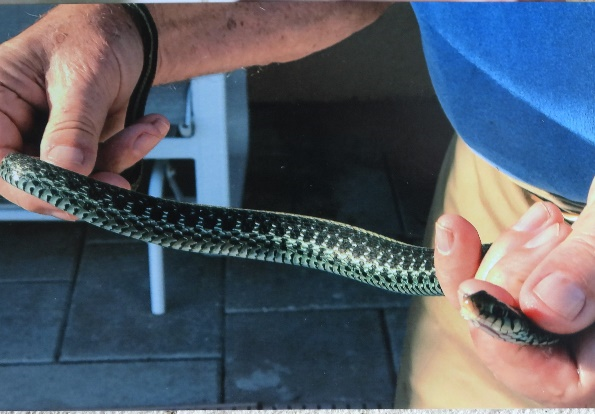 Eastern Garter Snake
Eastern Garter Snake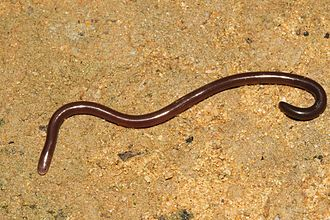 Flowerpot Snake
Flowerpot Snake
The Flowerpot Snake, also called the Brahminy Blind Snake, is one of many non-native species of animals in Cape Coral (more on that later in another post), in this case originally from southern Asia. It gained its worldwide distribution through its presence in the soil of potted plants, hence its name. It spread rapidly partly due to reproduction by parthenogenesis (it is an all-female species), reproduction that does not require fertilization to produce offspring. Its body form and small size (usually less than 6 inches) cause it to often be mistaken for an earthworm. Close inspection will reveal its scales. I find them frequently drowned in my pool, falling in from adjacent planters.
The Eastern Kingsnake in another species that is easy to handle. Its name derives from the fact that it will eat other snakes, including rattlesnakes. For our area, this large snake reaching up to nearly 7 feet, although typically 4-5. The pattern is the source of a local name in some areas-the Chain Snake.
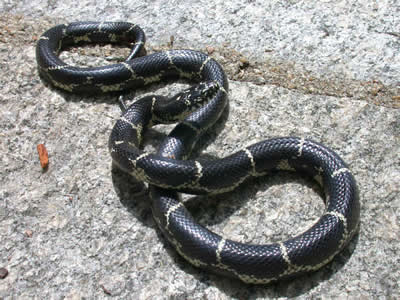 Eastern King Snake
Eastern King Snake
If you have an inherent fear of snakes, that fear would be best replaced by respect. They will run away from you if possible, or stand their ground, but they will not pursue you or lurk under your bed waiting for you to put your feet down in the middle of the night (not often, anyway). And they are important cogs in our wild and suburban ecosystems in the NW Cape.
Gordon R. Ultsch, Ph.D.

